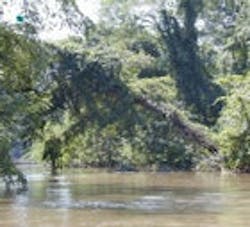EPA, D.C. and Maryland Set Trash Limits for Anacostia Watershed
The U.S. Environmental Protection Agency (EPA), the District of Columbia, and the state of Maryland announced a new total maximum daily load (TMDL) or “pollution diet” for trash in the Anacostia River, making the it the first interstate river in the nation with a Clean Water Act trash limit.
“Trash not only creates a nuisance and an eyesore, but also interferes with the people’s uses and enjoyment of their local river,” said EPA Regional Administrator Shawn M. Garvin. “This pollution diet is another critical milestone in the restoration of the Anacostia River and will aid in making the Anacostia a cleaner, safer watershed for all to enjoy.”
The federal Clean Water Act directs states to develop “pollution diets” for impaired bodies of water, such as the Anacostia River. A TMDL establishes the amount of a pollutant—in this case trash—that a body of water can receive without exceeding water quality standards. TMDLs provide the scientific basis for establishing water quality-based controls, reducing pollution from both point and non-point sources and restoring water quality.
“Our goal is to make the Anacostia River fishable and swimmable by 2032,” said Christophe A.G. Tulou, director of the District Department of the Environment. “Making the Anacostia trash-free is a tangible first step toward achieving that goal.”
To restore water quality, the TMDL requires capturing or removing more than 600 tons (1.2 million lb) of trash from the watershed annually. The District Department of Environment and Maryland Department of Environment, along with members of several non-governmental organizations, worked with EPA to develop this trash TMDL for the Anacostia River. The action contributes to the larger goals of the Trash Free Potomac Watershed Initiative, which has been underway for the past five years.
"This precedent-setting 'trash TMDL' is a multi-regional commitment to finally attack the trash traveling through our storm drain systems," said Maryland Department of the Environment Secretary Shari T. Wilson. "Trash has for too long been a problem in our waterways and communities—reducing trash and storm water runoff is key to restoring the Anacostia River, the Potomac River and the Bay."
To complement this TMDL, the EPA, as the permitting authority for the district, and the state of Maryland are developing storm sewer permits that will serve as key implementation tools requiring municipalities in the Anacostia watershed to achieve the required trash reductions. In addition, continued implementation of the Combined Sewer Overflow Long Term Control Plan for the District of Columbia supports achievement of the limits there.
Each year, hundreds of tons of trash and debris are illegally dumped or washed into the Anacostia with storm water runoff. As a result, the district and Maryland have both included the Anacostia River on their respective lists of impaired waters due to excessive quantities of trash and debris.
Source: U.S. EPA
